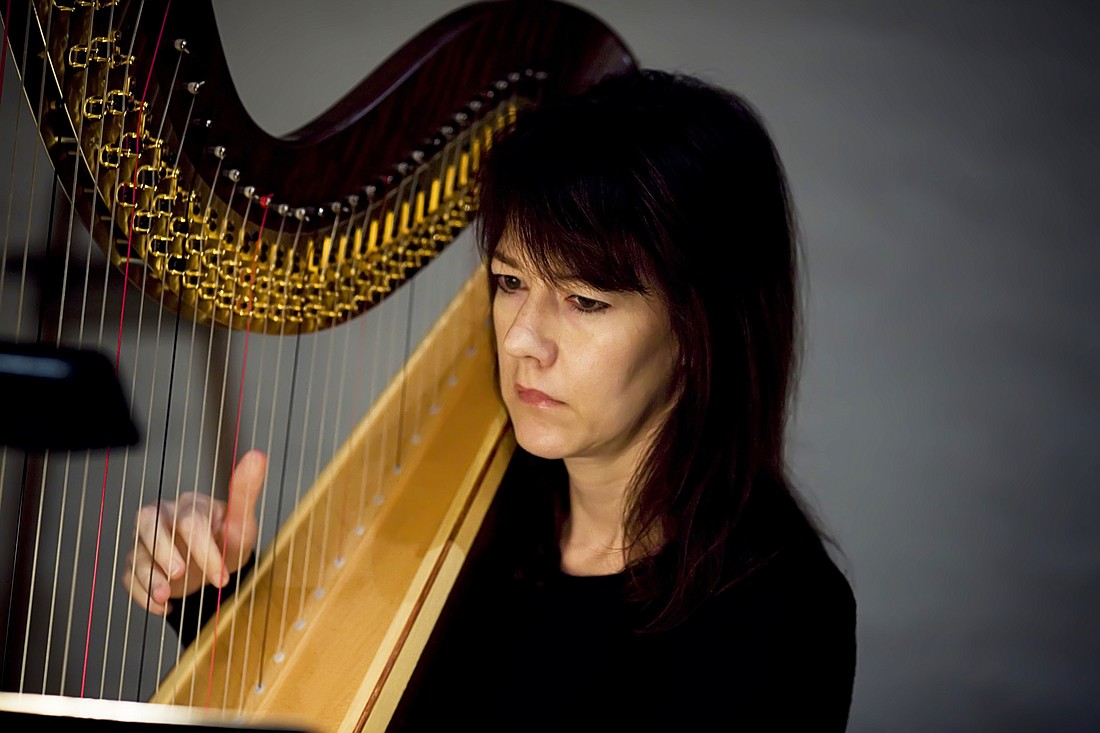- November 21, 2024
-
-
Loading

Loading

It’s an instrument associated with heaven. Plucked notes create a dreamy landscape and give listeners a feeling of floating peacefully.
It’s the harp — an instrument that Dawn Marie Edwards has spent years practicing and mastering.
The Bach Festival Society of Winter Park harpist will showcase the serene instrument at Insights & Sounds: Harp and Strings Thursday, Sept. 20 at Tiedtke Concert Hall on the Rollins College campus.
The unique program is half entertainment and half education. Attendees can expect a performance of six different harp-centric pieces backed by a string section, a flute and a clarinet. The program also will include segments describing the history of the harp, what makes the harp unique, how it’s played and its role in the orchestra. The audience also will have a chance to ask questions.
Musical compositions during the program will include “Aria in the Classic Style” by Marcel Grandjany; “Celtic Concerto: Hiraeth” by Catrin Finch; “Serenade for Strings in e minor” by Edward Elgar; “Lyric Suite” by John Rutter; “Angels in Flight” by Marjan Mozetich; and “A Gaelic Blessing” by John Rutter.
“I am so excited — it isn’t often that a harpist gets her own program,” Edwards said. “Many people don’t understand the difficulties of the harp. First of all, most instruments are playing with gravity — pushing down on piano keys, pushing down on the finger board or bow of a string instrument. I am constantly playing against gravity. And then there are the seven pedals.”
Edwards’ time with the Bach Festival Society of Winter Park began about 15 years ago, when she filled in as a substitute for a performance. The Bach Festival Society kept asking her back, and she has been with the organization ever since.
“I’ve always loved the harp, and I think it’s one of the most elegant and beautiful orchestral instruments we have,” Bach Festival Society of Winter Park conductor and Artistic Director John Sinclair said. “It is not easy to play. It’s a difficult instrument, but it’s made even more difficult than people know because of all the things that are going on. Most people don’t get to see the harpist’s feet work — they change keys (with the pedals). … Dawn Edwards is a seriously good harpist — she’s wonderful.”
An Apopka resident, Edwards originally grew up in Rochester, New York. She started attending the Eastman School of Music when she was 9 years old, and her first professional orchestra job was playing with the St. Louis Symphony at age 22. She went on to perform full-time in Spain with the Orquesta Sinfónica de Castilla y León at age 23.
Edwards also has toured as a professional harpist along the East Coast, playing in Carnegie Hall and the John F. Kennedy Center for the Performing Arts.
The harp has been her instrument for about 40 years, Edwards said.
Not only is the instrument complex, but also it frequently appears on its own — holding the attention and focus of an entire audience by itself, Edwards said.
“Harp in the orchestra is usually in the background sitting, waiting to play, counting hundreds of measures of music and then all of sudden (there’s a) big exposed harp part,” Edwards said. “If you are a whole string section, then yes, the conductor will (cue) a big section when to come in, but usually for harp, you are on your own. You really have to know the score well.”
Instead of sitting off to the side or in the back of an orchestra, Edwards and her harp will be front and center for the entire upcoming program.
Edwards said she looks forward to giving the audience more insight into the instrument she has loved for so many years.
“We picked the music keeping in mind that it is the middle of the work week, and after work,” Edwards said. “(It’s) sort of an emotional pick-me-up for the soul. It is going to be a fun concert.”